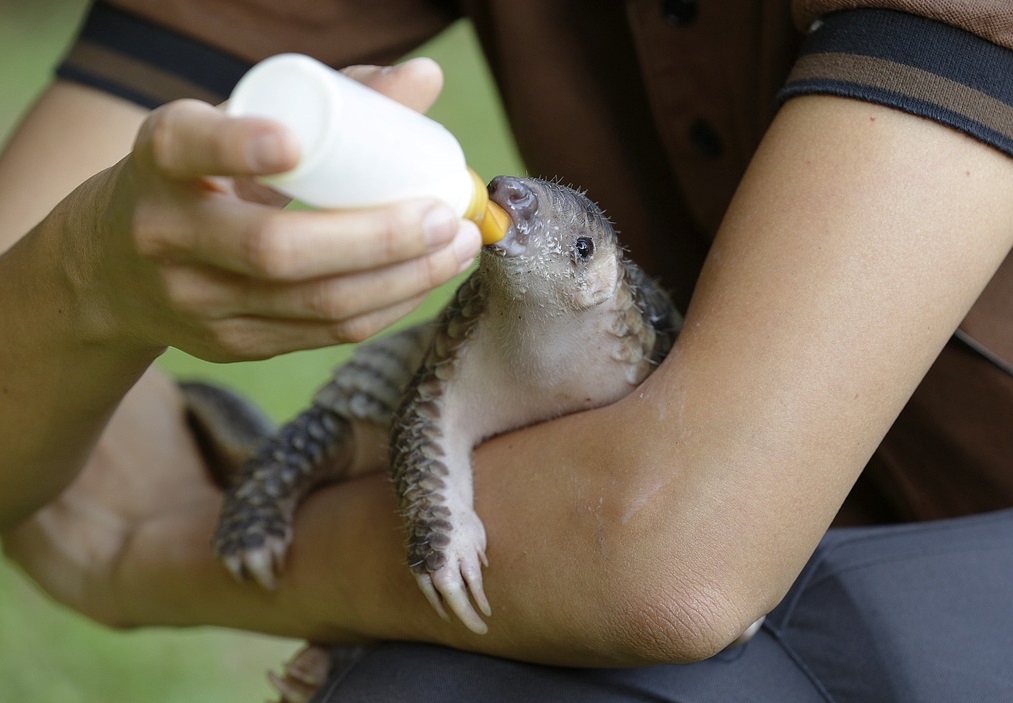This pangolin baby beat a 50 per cent chance of survival after being rescued and placed under human care
By Pamela Chow. Photos by Wildlife Reserves Singapore
On Feb 22, a four month-old baby pangolin was found weak, hungry and wandering alone at Upper Thomson Road. It was taken to Wildlife Reserves Singapore’s (WRS) rescued wildlife centre, where vets rushed to treat him and nurse him back to health.

It was a mammoth task, as the delicate species – a type of scaly anteater – is known not to thrive under human care.
At first, the baby rejected kitten milk replacer as he was used to his mother’s milk. In addition, he was at a crucial point in his life of weaning off milk and going onto a diet of ants and termites.
This change caused intestinal issues and vets had to provide 24 hour care to the critically endangered baby.


After a precarious one and a half week period, the pangolin started drinking the replacer milk and now relishes ants’ eggs.
He is being eased into a specialised diet that the adult pangolins at Night Safari take, and has since been spotted eagerly eating, burrowing around his play tub and endearingly clinging on to his caretaker’s arm despite being coaxed off.
Once the baby pangolin is independent and graduates to the captive diet, he will join the seven Sunda pangolins at Night Safari’s Fishing Cat Trail.

Guests can find out more about the elusive creature at Night Safari’s upcoming keeper interaction and feeding programme, which begins in mid-May. Due to their secretive nature, few know about the world’s only scaly mammal, so the session will provide rare insights of this creature’s natural behaviour.
During the visit, a keeper will educate visitors on the pangolin’s history and situation in the wild while pangolin feeding takes place in the exhibit.
To find out also why now is the best – and most adorable – time to visit our famous pandas, click here!
ADVERTISEMENTS










1 Comment